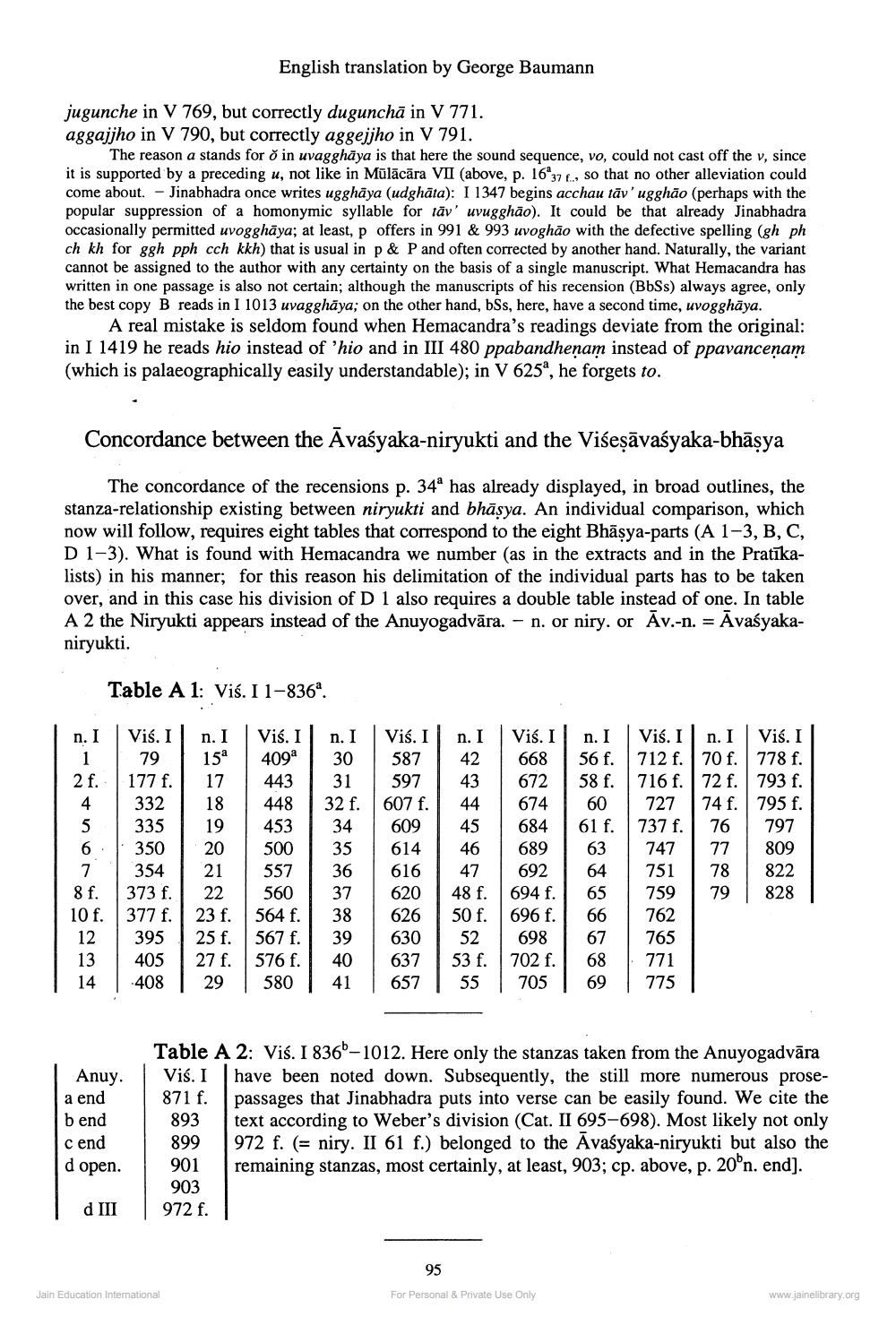________________
English translation by George Baumann
jugunche in V 769, but correctly dugunchā in V 771. aggajjho in V 790, but correctly aggeijho in V 791.
The reason a stands for o in uvagghāya is that here the sound sequence, vo, could not cast off the v, since it is supported by a preceding u, not like in Mülācāra VII (above, p. 1637 6., so that no other alleviation could come about. - Jinabhadra once writes ugghāya (udghāta): I 1347 begins acchau tāv' ugghão (perhaps with the popular suppression of a homonymic syllable for tāv' uvugghāo). It could be that already Jinabhadra occasionally permitted uvogghāya; at least, p offers in 991 & 993 uvoghāo with the defective spelling (gh ph ch kh for 8gh pph cch kkh) that is usual in p & P and often corrected by another hand. Naturally, the variant cannot be assigned to the author with any certainty on the basis of a single manuscript. What Hemacandra has written in one passage is also not certain; although the manuscripts of his recension (BbSs) always agree, only the best copy B reads in I 1013 uvagghāya; on the other hand, bSs, here, have a second time, uvogghāya.
A real mistake is seldom found when Hemacandra's readings deviate from the original: in I 1419 he reads hio instead of 'hio and in III 480 ppabandhenam instead of ppavancenam (which is palaeographically easily understandable); in V 625, he forgets to.
Concordance between the Avaśyaka-niryukti and the Višeşāvaśyaka-bhāsya
The concordance of the recensions p. 34o has already displayed, in broad outlines, the stanza-relationship existing between niryukti and bhāsya. An individual comparison, which now will follow, requires eight tables that correspond to the eight Bhāşya-parts (A 1-3, B, C, D 1-3). What is found with Hemacandra we number (as in the extracts and in the Pratīkalists) in his manner; for this reason his delimitation of the individual parts has to be taken over, and in this case his division of D 1 also requires a double table instead of one. In table A 2 the Niryukti appears instead of the Anuyogadvāra. – n. or niry. or Av.-n. = Avaśyakaniryukti.
Table A 1: Viś. I 1-836o.
n. I
n. I
42
Viś. I 587 597 607 f.
2 f.
31
44
609
45 46
Viś. I 778 f. 793 f. 795 f. 797 809 822 828
614
Vis. Il n. I Viś. Il n. I
79 158 4098 30 177 f. 17443 332
448 32 f. 335 19 453 34 | 350 20 500 35 354 21
557
36 373 f.
560 377 f. 23 f.
564 f. 395 25 f. 567 f. 40527 f. 576 f. 408 29 580 41
Viś. I n. I Viś. I n. I 668 56 f. 712 f. 70 f. 672 58 f. 716 f. 72 f. 674 60 727
74 f. 684 61 f. 737 f. 689
747 692 64 751 694 f.
759 79 696 f.
762 698
765 702 f.
771 705 69775
77 | 78
616
6 7
8 f. 10 f. 12 13 14
47
22
62048 f. 626 630
53 f. 657 55
Anuy. a end b end c end d open.
Table A 2: Viś. I 8366-1012. Here only the stanzas taken from the Anuyogadvāra Vis. I have been noted down. Subsequently, the still more numerous prose871 f. passages that Jinabhadra puts into verse can be easily found. We cite the 893 text according to Weber's division (Cat. II 695-698). Most likely not only
1972 f. (= niry. II 61 f.) belonged to the Āvaśyaka-niryukti but also the 901 remaining stanzas, most certainly, at least, 903; cp. above, p. 20°n. end). 903 972 f.
899
d III
95
Jain Education International
For Personal & Private Use Only
www.jainelibrary.org




